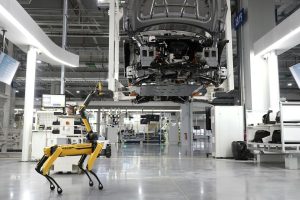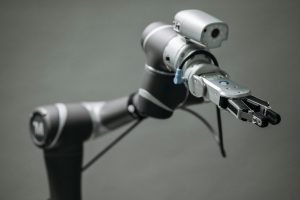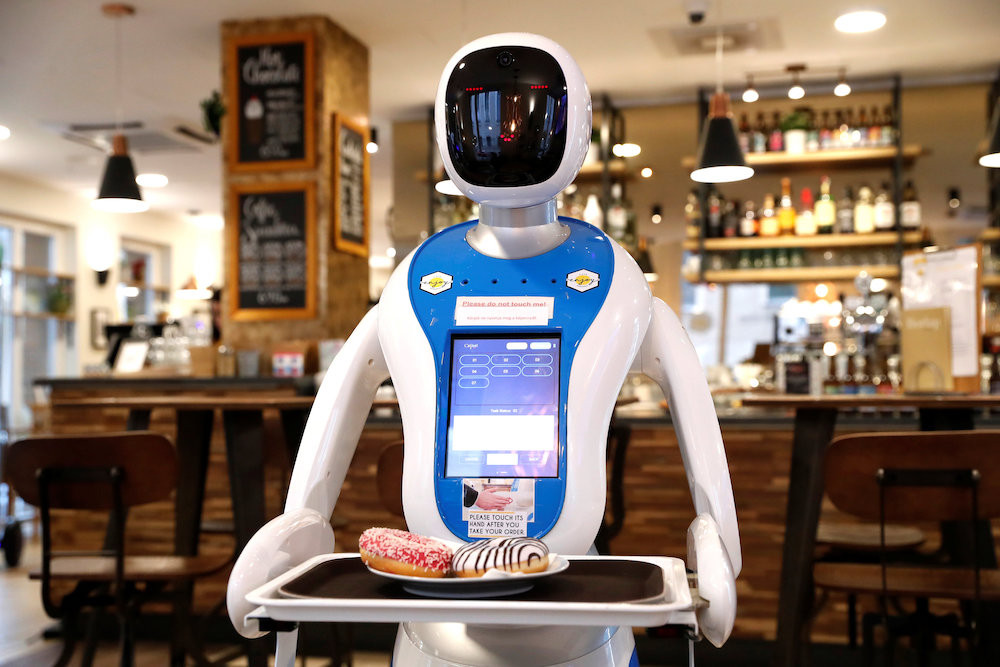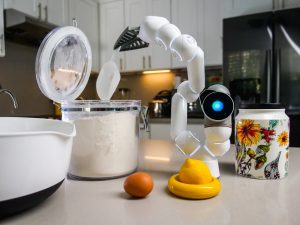Why rigorous motor testing is critical in a robotic age
In today’s rapidly advancing world of robotics, it’s not the artificial intelligence or sleek interfaces that keep these machines in motion—it’s the electric motor. Tucked away inside robotic joints, wheels, actuators, and grippers, electric motors are the core enablers of movement and mechanical function. Whether powering the precise articulation of a robotic arm in a factory or the silent propulsion of an autonomous delivery bot on a city sidewalk, electric motors are fundamental to robotics.
Yet while much attention is paid to robotics software, navigation systems, and AI, one vital aspect remains underrepresented: how do we ensure these motors perform reliably under the demands placed on them?
The answer lies in advanced motor testing. And as robotics become more complex, widespread, and critical to human life and industry, the importance of motor testing can no longer be an afterthought.
Robotics is Everywhere – Often Where We Least Expect It
The modern robot has moved far beyond science fiction and industrial settings. Today, robotics technology is found in nearly every sector—performing tasks that were once labor-intensive, dangerous, or simply inefficient for humans.
In industrial manufacturing, robotic arms dominate the floor, performing welding, assembly, and packaging operations with speed and precision. These articulated systems can work 24/7 with minimal error, increasing productivity and lowering cost per unit.
Logistics and supply chains now rely on fleets of autonomous robots to navigate vast warehouses, move goods between shelves, or load delivery trucks. These mobile robots work in harmony with humans, reducing physical strain and optimizing throughput.

Healthcare and hospitality are increasingly adopting service robots. Hospitals employ robots for UV disinfection and medication delivery, while hotels are deploying them for room service and concierge tasks. Cleaning robots are found in commercial spaces—sweeping, scrubbing, and vacuuming large areas with programmable efficiency.
And then there are the less obvious places where robots thrive. Robotic camera arms capture flawless motion shots in broadcast studios. Drones equipped with precision rotors monitor crops, inspect infrastructure, or perform aerial surveys. In transportation, robotic systems manage train signaling and even airport baggage logistics. These robots are embedded in our systems—often invisible, but invaluable.
All of them rely on the performance and reliability of their electric motors. If a motor fails, the robot fails. It’s as simple as that.
Ten Industries Where Robots Are Already at Work (Often Behind the Scenes)
While robotics in manufacturing and logistics may be familiar, the scope of industries using robots is far more diverse and often unexpected. Here are ten areas where electric motors quietly power robotic systems doing real work—many of them in plain sight.
-
Airports and Terminals In major airports across Asia, robots are deployed to autonomously clean floors, enhancing hygiene and efficiency in high-traffic zones. These machines run silently in the background, often unnoticed by travelers, yet they are a key part of modern airport operations.
-
Hospitality and Restaurants Service robots are being used in hotels and restaurants to deliver food, pick up dishes, and even greet guests. They navigate crowded environments with sensors and onboard intelligence—freeing up human staff and adding novelty to customer experience.
-
Manufacturing and Industrial Automation From automotive assembly lines to electronics fabrication, robotic arms perform precision tasks like welding, painting, and component placement. These high-precision systems rely on motors that can deliver stable torque, repeatable accuracy, and long operating life.
-
Warehousing and E-Commerce Logistics Autonomous mobile robots (AMRs) and robotic sorting arms move packages, track inventory, and optimize picking routes in massive fulfillment centers. Retail giants like Amazon use hundreds of thousands of such robots to maintain 24/7 operations.
-
Healthcare and Hospitals In clinical environments, robots handle routine delivery of medications, linen, or samples between departments. Surgical robots assist doctors with minimally invasive procedures, demanding extremely precise motor control and sterile reliability.
-
Hazardous Environments and Nuclear Facilities Specialized robots operate in environments too dangerous for humans—handling radioactive waste, decontaminating pipelines, or inspecting toxic zones. These robots often resemble humanoids or crawling “vines,” and their motors must withstand extreme heat, radiation, or confined spaces.
-
Security and Explosive Ordnance Disposal In airports and defense settings, bomb-disposal robots inspect and neutralize suspicious packages using robotic manipulators. These machines require rugged motors capable of sudden torque demands and exact control for handling delicate or volatile objects.
-
Urban Maintenance and City Infrastructure Robots are used for municipal cleaning, sewer inspections, and even garbage collection. In some cities, sidewalk-cleaning robots or autonomous sweepers operate alongside pedestrian traffic, performing essential maintenance work quietly and efficiently.
-
Creative Arts and Autonomous Commerce Some experimental robots have begun producing and selling their own art. One such robot creates paintings and sells them via smart contracts, autonomously managing both creation and revenue—blurring the lines between automation and economic agency.
-
Theme Parks and Entertainment Venues Theme parks deploy animatronic robots for lifelike performances, synchronized shows, and interactive experiences. These systems require coordinated multi-axis motor control, combining engineering with storytelling to deliver immersive entertainment.

The Diversity of Robots Means Diverse Motor Requirements
The world of robotics is not one-size-fits-all. The range of electric motors used varies dramatically depending on function, environment, and form factor.
Robotic arms require motors with high precision torque control and low ripple to ensure smooth, controlled movements. Mobile robots need efficient, durable motors capable of handling variable loads and terrain. Cleaning robots prioritize low noise and compact design, while humanoid robots require high-speed, lightweight motors that can mimic organic movement with natural fluidity.
In each of these cases, different motor types—such as brushless DC motors (BLDC), permanent magnet synchronous motors (PMSM), or induction motors—are deployed. Each comes with unique testing requirements for torque, speed, efficiency, and dynamic behavior.
For manufacturers, OEMs, and integrators, testing these motors before they go into service is not optional. It is essential.
Why Testing Electric Motors in Robotics Is Mission-Critical
The performance of a robotic system hinges on the motor’s ability to function consistently under variable loads and over time. Motor testing provides validation and confidence across several critical dimensions:
-
Reliability: Motors must operate flawlessly in real-world conditions without risk of sudden failure or degradation.
-
Precision: Especially in robotics, where exact movement is often required, torque ripple, friction, and back EMF must be measured and controlled.
-
Safety: In environments like healthcare, aviation, or manufacturing, faulty motors can lead to hazardous failures.
-
Compliance: Motors must meet international standards such as IEC 60034-2-1, IEEE 112, and CSA C390.
-
Predictive Maintenance: By detecting early signs of wear or instability, maintenance teams can act before costly downtimes occur.
Robots are often deployed in critical operations where failure is not acceptable. A misaligned robotic arm in a medical device, or a motor failure in a warehouse shuttle, could have cascading effects. Comprehensive motor testing ensures such risks are minimized.
Rethinking Testing: Why Traditional Load-Based Methods Fall Short
Traditionally, motor testing has relied on regenerative dynamometer systems (RDS). These systems simulate real-world load conditions and offer precise performance data, particularly in R&D labs. While accurate, RDS systems can be expensive, time-consuming to set up, and often impractical for high-volume production environments or smaller-scale motor development.
In robotics, where innovation cycles are rapid and cost constraints tight, many companies need a faster, more adaptable solution.
The IDS Advantage: Patented, Scalable, and Built for Robotics
Motomea’s Inertial Dynamometer System (IDS) is a globally patented solution that redefines the way electric motors are tested—especially in robotics and automation applications. Unlike conventional methods, the IDS performs full load performance testing without requiring any mechanical load. Instead, it utilizes the motor’s own rotor inertia to simulate loading, capturing a complete profile of the motor’s dynamic behavior during acceleration and deceleration.
The result is a unique blend of speed, precision, and affordability, making it ideal for robotic manufacturers, R&D labs, and production lines.
What Makes IDS Different?
-
Patented Technology: As the inventors of the Inertial Dynamometer, Motomea holds global patents for this breakthrough approach to motor testing.
-
Dynamic Performance Testing: From stall to no-load, IDS captures real-time data on torque, current, voltage, efficiency, ripple torque, cogging, and back EMF.
-
No External Load Required: This dramatically reduces cost and setup time while eliminating mechanical coupling errors.
-
Adaptable to Any Motor: Whether it’s a micro motor in a robotic surgical tool or a high-speed drive motor in an autonomous vehicle, IDS delivers.
-
Portable Models Available: Engineers can test motors directly in their operating environments, accelerating feedback loops and shortening product development cycles.
In essence, IDS brings the lab to the floor. It enables companies to perform deep motor diagnostics at production speed, without compromising on insight or accuracy.
Conclusion: Robotics Demands Smarter Motor Testing
As the role of robotics expands—from industrial floors to hospitals, agriculture, logistics, and beyond—the reliability of the electric motor becomes the foundation of trust. Without robust, accurate testing, manufacturers face increased risks, reduced performance, and avoidable maintenance costs.
Motomea’s patented IDS solution offers a smarter, faster, and more accessible way to test motors across the robotics spectrum. It empowers engineers and companies to keep pace with innovation while ensuring every robotic system operates safely, efficiently, and precisely.
The future of robotics will be shaped by the intelligence of their systems—and the integrity of their motors. With Motomea IDS, the industry now has the tools to guarantee both.





 Thank you for your submission! Your brochure is on the way!
Thank you for your submission! Your brochure is on the way!